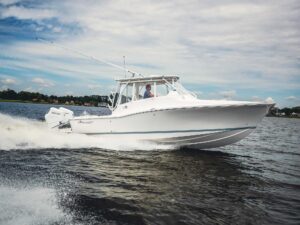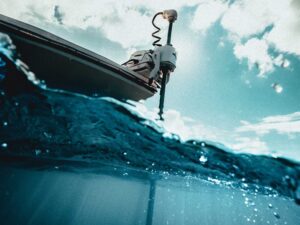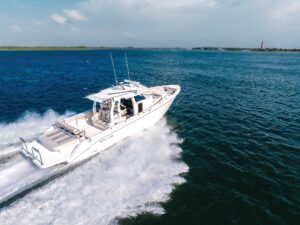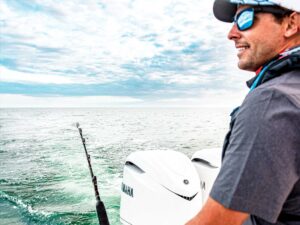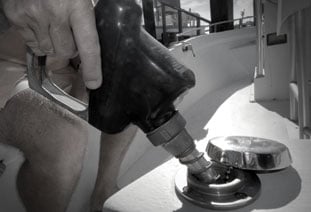
Before computers provided fuel-consumption data in our vehicles, we used a basic formula for determining gas mileage:
- Note miles on odometer at fill-up.
- Drive several hundred miles.
- At next fill-up, record gallons pumped, note miles on odometer.
- Subtract first odometer reading from second.
- Divide miles driven by gallons pumped.
But that process only gave us an average fuel burn over time. Today’s monitoring systems — on cars and now vessels — let us know in real time whether we’re operating efficiently.
“Fuel economy is obviously a big push button for a lot of people. It’s something engineers are always working on — a constant point of focus and emphasis,” says David Meeler, product marketing information manager for Yamaha.
Outboard manufacturers now make it fairly foolproof for boaters with newer engines to operate their vessels at peak efficiency simply by adjusting throttles and trim tabs while watching a digital display. But boats with any kind of power can benefit from easy-to-install, aftermarket fuelflow meters.
Outboard Magic
Most, if not all, marine outboard companies — Yamaha, Mercury, Evinrude, Suzuki, Honda, Nissan, Tohatsu — make computer-controlled engines. A command module in the powerhead gathers information from sensors placed throughout the engine. The module transmits that data to a vessel’s gauges and/or to a multifunction electronics display (using NMEA 2000), which shows a wide variety of stats.
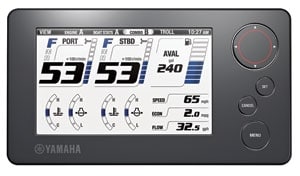
The kind of stats and their customization — including fuel-management details — depends on the type of gauges or MFD you use. Gauges and displays also must be compatible with the engine model. In Yamaha‘s case, Command Link (2006) and Command Link Plus (2009) gauges provide fuel-flow data. They may be installed with a new engine or added as an upgrade for several hundred to several thousand dollars, depending on the equipment required. Yamaha also offers a less-expensive paddle-wheel system.
Instead of using a mechanical device that sends an electrical current to a gauge, Yamaha’s newest systems are purely electronic. “It comes directly from the ECM (engine control module) and the fuel-mapping that’s in there and the sensors on the engine,” Meeler says. “It knows how much fuel it’s injecting.”
Meeler says the stat that most obviously and reliably translates to fuel efficiency is miles per gallon, which most of us quickly identify with from our vehicles. To calculate that number, Yamaha gauges must be connected to a mechanism that collects speed information such as a GPS (via NMEA 0183) or a triducer.
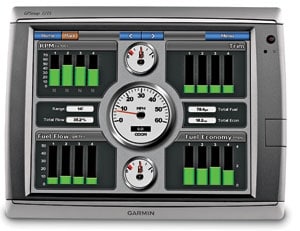
If you use a NMEA 2000-capable electronics display from companies such as Lowrance, Garmin, Raymarine, Furuno, Simrad, Geonav and others, you can buy a patch cable that marries Yamaha’s ECM output directly to the display. Other outboard companies use similar bridges to nav displays or connect directly to a NMEA 2000 MFD.
If your display or gauges read only gallons per hour, you can convert that to mpg with this formula: mph ÷ gph = mpg. “You want to know how far you’re going with a gallon of gas,” Meeler says. “Look at that number more than others.”
Yamaha publishes performance bulletins on its website for a variety of hulls paired with the company’s engines, but every boat has its own “sweet spot.” And that sweet spot might change on any given outing, based on load and conditions.
To find that spot, accelerate until your vessel is planing, then watch mpg. Increase rpm in increments of 500 until mpg stabilizes at its greatest level. Then adjust trim tabs to fine-tune the reading.
Measuring Meter
Anglers running older outboards and other kinds of engines can check the manufacturer’s website for gauge and MFD compatibility, or buy an aftermarket fuel-flow meter such as those made by FloScan Instrument Co..
FloScan sells products for gas and diesel engines from 25 hp all the way up to 6,000 hp, ranging in price from about $290 to more than $4,000, says sales manager Joe Dydasco.
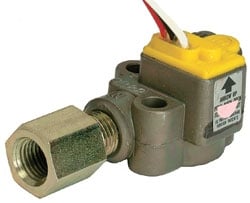
FloScan uses a turbine or paddle-wheel sensor installed in the fuel line, like a filter, to directly measure how much fuel flows to the engine. The sensor generates pulse signals using opto-electronics: An LED light beam points directly at a photo transistor. As the rotor within the sensor spins, it interrupts the light beam and generates a pulse.
Pulses travel through the system’s wiring to a meter at the helm. Meters vary in cost and capability. The simplest meter reports gallons per hour and total gallons consumed, while the more expensive 9000 series reports all kinds of engine information and connects to a GPS using NMEA 0183 to display mpg.
Dydasco says most boaters with gas-powered engines install their fuel-flow meter themselves; typically that involves three wires — 12-volt, ground and signal. However, diesel installations prove more complex as diesels come with forward and return fuel lines, which might be too physically rigid. Custom hoses might be necessary.
(Note: Garmin and Lowrance sell inexpensive NMEA 2000 flow sensors for older gas engines that don’t transmit flow data.)
After installation, fuel-flow meters can also help diagnose engine trouble. “Once you’ve used our product, you’ll know your engines burn ‘x’ gallons at ‘y’ rpm. If you see any drastic change to the normal gph burn rate, you’ll know something’s not going right,” Dydasco says.
Of course, engine trouble also shows quickly in performance, but when it doesn’t, a meter acts as a bellwether.
Dollars and Sense
Regardless of where gas and diesel prices float, fuel efficiency makes sense. Anglers should factor in fuel monitoring, just as they consider trolling speeds and line choices.
The technology is here: Upgrade gauges, add a meter, connect your engine to an MFD, or completely replace an older outboard and its systems. You’ll certainly recoup some of that cost at the fuel pumps.

